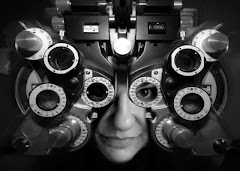In the midst of all the Christmas slog and obligation, there sometimes is a bright little spot. I have heard over the years that I am a thoughtful gift-giver, because I take the time to try to find things I think the recipient would truly like, and I try to make it a surprise. My mom and dad had that skill and generosity and I am glad they passed it on to me. And maybe, maybe, I have passed it on to Couch Teen. He is old enough now to venture out into the big world of buying options all on his own at Christmastime, and this is what he bought for me this year, “PUNK: The Definitive Record Of A Revolution” by authors Stephen Colegrave and Chris Sullivan:
Now there’s a kid who knows his mama. He sincerely said to me that he hoped that I would find the time to read it and that I would enjoy it. He really wanted me to like it, and of course I did, because I would, and that he knew that makes me smile. It’s a very cool book, an overview of the history of punk music with a chunky, good-looking layout, layering photographs and quotes and text in a very fresh and visually-appealing way. I like to see music books look this good; so many just aren’t done this well.
The cover of the book of course features the image of the unlovely and untalented (and dead) Sid Vicious of the Sex Pistols. Now, Sid was dumber than a bag of rocks – in fact he was dumber than a gallstone in a baggie with a broken Ziploc – but he is surely the most iconic visual representation of punk music. His bandmate Johnny Rotten could arguably take Sid’s place as the most recognizable punk face, but since he sells butter now and is not at all dead, that’s a bit diluted.
Is it more punk to kill your scummy girlfriend and die of an OD at 21, or live to keep making the music you want and profit mightily off The Man? Both? Neither? I don’t know. The real, genuine, and lasting force behind punk is the idea that you are going say what you want in the way that you want to, and take something that was marginalized, ignored, suppressed, forgotten, or reviled to public attention. You do it your way, whether you are Frank Sinatra or Sid Vicious, and damn the torpedoes.
The stereotypical view of punk – some vile spitting safety-pinned monsters thrashing away and yelling about killing guys or something – is really just a small part of a much bigger movement. It isn’t punk at all to form a band like that 25 years after the Sex Pistols or Black Flag or Fear; it’s just copying, which is anti-punk. Punk included artists and poets and fashion designers, the young and the old, transvestites and fresh-faced farm girls. It spread from the speed-thrash of the Ramones (who had an almost-sweet reverence for the classic pop music of the ‘60s) and the roaring glamour/camp of the New York Dolls, to The Damned and the Dead Boys and The Circle Jerks and The Clash. So many different kinds of people and different ways of expression…Patti Smith, Television, The Fall, Joy Division, Siouxsie and The Banshees. Punk pushed forward Elvis Costello, The Go-Gos, Joe Jackson, The B-52’s, Devo – all artists that might never have gotten a minute of exposure in the AOR morass that was the mid-‘70s rock machine.
Punk gave people the idea, like Elvis Presley did in the mid’50s and the Beatles did in the mid-‘60s, that you can be a regular person, be who you are, and have your voice heard. Sometimes the messages aren’t pretty, popular, or compatible with life. Assholes have voices, too, we know. But however you define it and however you see punk’s influence, it certainly is a fascinating idea as a concept and a cultural phenomenon. I am glad to have my new book to add to my musical library, and even happier that my punk kid bought it for me. 
PUNK 2
Wednesday, December 30, 2009



